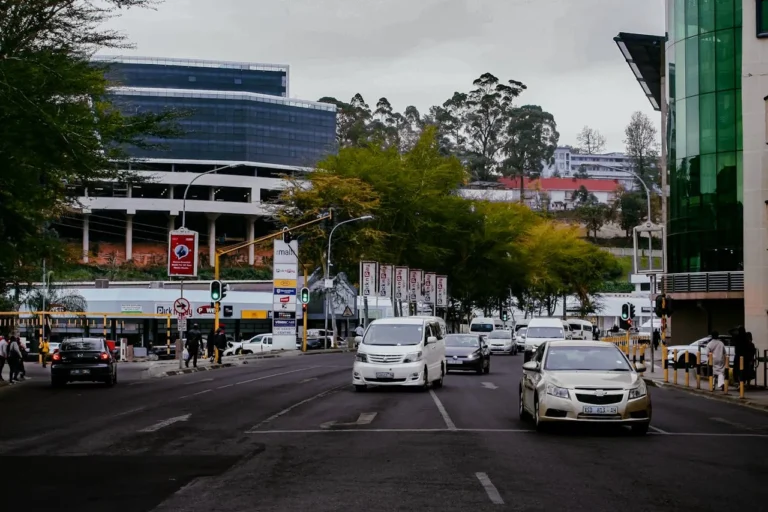
Japan Autonomous Vehicles Market: Innovations, Challenges, and Growth Outlook to 2033
The future of autonomous mobility in Japan is quickly taking shape.Toyota According to the newly released report “Japan Autonomous Vehicles Market: Innovations, Challenges, and Industry Forecast” by ResearchAndMarkets.com, the country’s autonomous vehicles (AV) market is projected to grow from US$ 4.02 billion in 2024 to US$ 24.25 billion by 2033, achieving a striking compound annual growth rate (CAGR) of 22.1%.
Behind this surge is a unique combination of technological excellence, demographic pressures, and government-backed initiatives that make Japan one of the most important global arenas for autonomous driving. From urban pilot projects in Tokyo and Fukuoka to rural deployments in Hokkaido and Kyushu, AVs are poised to address not only efficiency and innovation but also some of the nation’s deepest social challenges.
Demographics and Social Drivers of AV Adoption
Japan’s market for autonomous vehicles is shaped as much by social necessity as by technological ambition. The country has one of the world’s fastest-aging populations and a declining birth rate, creating a shortage of drivers in both public transportation and logistics.
In rural regions such as Hokkaido and Kyushu, this demographic shift has made it increasingly difficult to sustain bus routes, delivery networks, and taxi services. AVs are being positioned as a lifeline, capable of ensuring continued access to healthcare, shopping, and community events for older citizens.
For seniors who can no longer drive, autonomous shuttles and taxis promise greater independence. Pilot programs already underway are testing AVs as Toyota an alternative to conventional mobility solutions, ensuring that older citizens remain connected to their communities. As such, AVs are not simply a futuristic concept in Japan; they are an immediate response to urgent mobility needs.
Technology Leadership and Industrial Strength
Japan has long been a global powerhouse in both automotive manufacturing and advanced technology, giving it a head start in the AV sector. Toyota Industry giants like Toyota, Honda, and Nissan are making significant investments in next-generation systems that integrate AI, connectivity, and sensors.
At the same time, Japan’s electronics and robotics industries provide critical components such as LIDAR, cameras, processors, and control systems. The precision engineering and reliability that define Japanese manufacturing align perfectly with the safety requirements of autonomous vehicles.
The country’s innovation ecosystem, where automakers collaborate with IT firms and universities, accelerates progress. These partnerships support prototype testing, software refinement, and real-world trials that bridge the gap between laboratory research and market-ready products.
Government Support and Regulation
The Japanese government has been instrumental in driving AV adoption. Through policy, funding, and regulatory reforms, authorities are paving the way for broader commercialization.
Two flagship programs illustrate this commitment:
- Smart Mobility Challenge – an initiative that encourages pilot projects and public-private collaboration to test AVs in both urban and rural contexts.
- Strategic Innovation Promotion Program (SIP) – a government-backed framework that funds research, encourages cross-industry cooperation, and lays the groundwork for scaling AV deployment.
Legal reforms have also kept pace. Amendments to the Road Traffic Act and the Road Transport Vehicle Act now allow Level 3 autonomous vehicles to operate legally on public roads. Further revisions are being prepared to enable Level 4 and Level 5 systems while addressing issues of liability, cybersecurity, and infrastructure integration.
By providing clear regulations and dedicated test zones, Japan has created one of the world’s most supportive environments for AV commercialization.
Pilot Projects and Real-World Deployments
Japan’s approach to AVs is pragmatic, emphasizing gradual commercialization through pilot programs. Smart cities such as Tokyo, Fukuoka, and Aichi are leading the way with trials of driverless buses, taxis, and delivery trucks.
In rural settings, AVs are being tested as substitutes for shrinking bus services. These deployments not only validate the technology but also help build public familiarity and trust, an essential step for mainstream adoption.
The government’s cautious strategy balances innovation with safety, ensuring that AVs are introduced responsibly and effectively.
Challenges Facing the Market
Despite strong momentum, several hurdles remain:
1. High Costs of Development and Infrastructure
Building AVs requires extensive R&D in AI, sensors, and vehicle control systems. Beyond the vehicles, Japan must also invest in digital maps, smart traffic signals, 5G networks, and real-time data platforms. Such upgrades are expensive, and in sparsely populated areas, the economic justification for heavy infrastructure spending is weaker. This creates disparities in readiness between urban and rural regions.
2. Public Trust and Safety Concerns
Consumer acceptance is another challenge. While Japan is known for its openness to technology, many citizens remain cautious about handing full control to machines—especially in dense urban areas where driving conditions are unpredictable. Global incidents of AV malfunctions have fueled skepticism.
Issues of liability in case of accidents, cybersecurity threats, and system reliability remain major talking points. To win public confidence, AV companies must demonstrate uncompromising safety standards, transparent testing, and clear communication.
Competitive Landscape
Japan’s AV industry is influenced by both domestic leaders and international players. Key companies covered in the market report include:
- Toyota Motor Corporation – pioneering in Level 3 automation and mobility-as-a-service pilots.
- Honda Motor Co., Ltd. – first automaker in the world to gain approval for a Level 3 AV on public roads.
- Nissan Motor Co., Ltd. – advancing connected mobility and sensor technologies.
- Tesla Inc. – leveraging its global brand to expand in Japan’s luxury EV-AV market.
- BMW AG, Audi AG, and General Motors – bringing international expertise and partnerships.
- Uber Technologies Inc. – exploring AV-based ride-hailing in collaboration with Japanese firms.
- Volvo and Ford Motor Company – testing autonomous driving features with an eye on Asian expansion.
These players compete in areas ranging from hardware and software development to mobility services and logistics solutions, with both collaboration and rivalry shaping the competitive dynamics.
Market Segmentation and Forecasts
The report divides the Japan AV market into several dimensions:
- By Component – hardware (sensors, processors, control systems) and software/services (AI platforms, fleet management).
- By Level of Automation – Level 3 (currently legal), Level 4 (pilot testing), and Level 5 (future fully autonomous systems).
- By Application – transportation and logistics (driverless taxis, buses, and trucks) and military/defense applications.
- By City – top regions for AV deployment include Tokyo, Aichi, Kansai, Kanagawa, Saitama, Fukuoka, and rural prefectures like Hokkaido.
Historical data shows early experimentation, but the real acceleration will occur between 2025 and 2033 as infrastructure matures and regulatory approvals expand.
Strategic Outlook
Japan is uniquely positioned in the global AV race. Its aging society creates immediate use cases, its tech and automotive industries provide unmatched capabilities, and its government offers regulatory clarity and financial support.
However, the success of Japan’s AV market will depend on overcoming challenges around cost, infrastructure, and public trust. By addressing these hurdles, Japan could not only secure domestic leadership in autonomous mobility but also export its solutions worldwide, influencing global standards in safety, cybersecurity, and system integration.








